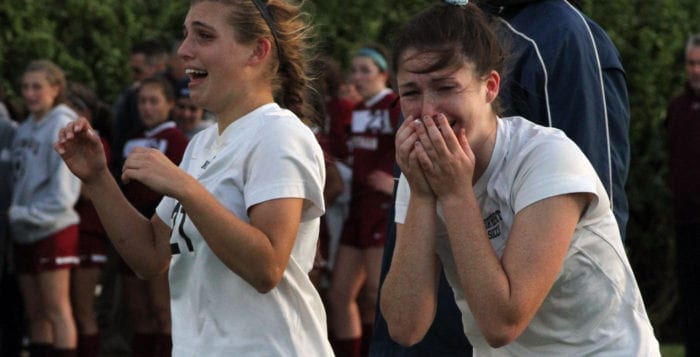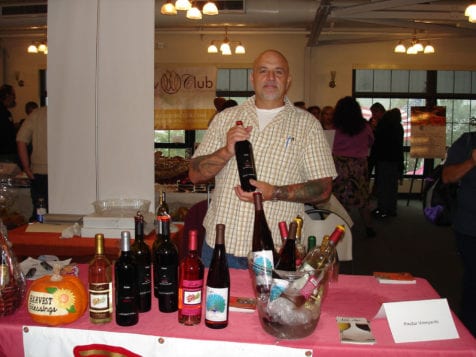By David Dunaief, M.D.
We are constantly redefining or at least tweaking our diets. We were told that fats were the culprit for cardiovascular disease (CVD). That the root cause was saturated fats, specifically. However, a recent study showed the sugar industry had a strong influence on the medical and scientific communities in the 1960s and 1970s, influencing this perception (1).
Why is this all important? Well, for one thing, about one out every two “healthy” 30-year-olds in the United States will most likely develop CVD in their lifetime (2). This is a sobering statistic. For another, CVD is still the reigning notorious champion when it comes to the top spot for deaths in this country. Except, this disease is preventable, for the most part.
What can prevent CVD? You guessed it, lifestyle modifications, including changes in our diet, exercise and smoking cessation. There is no better demonstration of this than what I refer to as the “new” China Study, which was done through the Harvard T.H. Chan School of Public Health. I call it “new,” because T. Colin Campbell published a book in 2013 with the same name pertaining to the benefits of the Chinese diet in certain provinces. However, the wealthier China has become in the last few decades by opening its borders, the more it has adopted a Western hemisphere-type lifestyle, and the worse its health has become overall. In a recent study published in the Journal of the American College of Cardiology, results show that over 20 years the rate of CVD has increased dramatically in China, and it is likely to continue worsening over time (3). High blood pressure, elevated “bad” cholesterol LDL levels, blood glucose (sugars), sedentary lifestyle and obesity were the most significant contributors to this rise. In 1979 about 8 percent of the population had high blood pressure, but by 2010, more than one-third of the population did.
Does this sound familiar? It should, since this is due to adopting a Western-type diet. The researchers highlighted increased consumption of red meat and soda, an increasingly sedentary lifestyle and, unlike us, half the population still smokes. But you can see just how powerful the effects of lifestyle are on the world’s largest population. There were 26,000 people and nine provinces involved.
Cardiologist embraces fat
We are going to focus on one area, diet. What is the most productive diet for preventing cardiovascular disease? In a recent New York Times article, entitled “An Unconventional Cardiologist Promotes a High-Fat Diet,” published on Aug. 23, 2016, the British cardiologist suggests that we should embrace fats, including saturated fats (4). He has bulletproof coffee for breakfast, with one tablespoon of butter and one tablespoon of coconut oil added to his coffee. He also promotes full-fat cheese as opposed to low-fat cheese. These are foods that contain 100 percent saturated fats. He believes dairy can protect against heart disease. Before you get yourself in a lather, either in agreement or in disgust, let’s look at the evidence.
The Cheesy Study
Alert! Before you read any further, know that this study was sponsored by the dairy industry in Denmark. Having said this, this study would presumably agree with the unconventional cardiologist. The results showed that full-fat cheese was equivalent to low-fat cheese and to carbohydrates when it came to blood chemistries for cardiovascular disease, as well as to waist circumference (5). These markers included cholesterol, LDL “bad” cholesterol levels, fasting glucose levels and insulin. There were three groups in this study: those who consumed three ounces of full-fat cheese, low-fat cheese or refined bread and jam. The authors suggested that full-fat cheese may be part of a healthy diet. This means we can eat full-fat cheese, right? NOT SO FAST.
The study was faulty. The control arm was refined carbohydrates. And since both cheeses had similar results to the refined carbohydrates, the more appropriate conclusion is that full-fat and low-fat cheeses are no better for you than refined grains.
What about dairy fat?
In a meta-analysis (involving three studies — the Professional Follow-Up Study and the Nurses’ Health Studies 1 and 2), the results refute the claim that dairy fat is beneficial for preventing CVD (6). The results show that substituting a small portion of energy intake from dairy fat with polyunsaturated fats results in a 24 percent reduction in CVD risk. And doing the same with vegetable fats in replacement of dairy fat resulted in a 10 percent reduction in risk. Dairy fat was slightly better when compared to other animal fat.
This meta-analysis involved observational studies with a duration of at least 20 years and involving more than 200,000 men and women. There needs to be a large randomized controlled trial. But, I would not rush to eat cheese, whether it was the full-fat or low-fat variety. Nor would I drink bulletproof coffee anytime soon.
Saturated fat: not so good
In a recent meta-analysis (involving three studies run by the Harvard School of Public Health), replacing just 5 percent of saturated fats with both mono- and polyunsaturated fats resulted in a substantial reduction in the risk of mortality, 27 and 13 percent, respectively (7). This is a blow to the theory that saturated fats are not harmful to your health. Also, the highest quintile of poly- and monounsaturated fat intake, compared to lowest, showed reductions in mortality that were significant, 19 and 11 percent, respectively. Again, this is an observational conglomeration of studies, using the same studies as with the dairy results above. This analysis suggests that the unconventional cardiologist’s approach is not the one you want to take.
The good news diet!
Here is the good news diet. In a recent randomized controlled trial (RCT), the gold standard of studies, results showed that high levels of polyphenols reduce the risk of cardiovascular disease (8). Polyphenols are from foods such as vegetables, fruits, berries especially and, yes, chocolate. The researchers divided the study population into two groups, high and low polyphenol intake. The biomarkers used for this study were endothelial (inner lining of the blood vessel) dependent and independent vasodilators. The more dilated the blood vessel, the lower the hypertension and the lower the CVD risk. These patients had hypertension, a risk factor for CVD. Those who consumed high levels of polyphenols had higher levels of nutrients such as carotenoids and vitamin C in their blood.
Is fish useful?
In a study, results show that eating a modest amount of fish decreases the risk of death from CVD by more than one-third (9). What is a modest amount? Consume fish once or twice a week. You want to focus on fish that are rich in omega 3s — docosahexaenoic acid (DHA) and eicosapentaenoic acid (EPA). These are fatty fish with plenty of unsaturated fats, such as salmon. Thus, more of a Mediterranean-style diet, involving fruits and vegetables, as well as mono- and polyunsaturated fats in the forms of olive oil, nuts, avocado and fish may reduce the risk of CVD, while a more traditional American diet, with lots of pure saturated fats and refined carbohydrates may have the opposite effect. The reason we can’t say for sure that pure saturated fat should be avoided is that there has not been a large randomized controlled trial. However, many studies continually point in this direction.
References: (1) JAMA Intern Med. online Sept. 12, 2016. (2) Lancet. 2014;383(9932):1899-1911. (3) J Am Coll Cardiol. 2016;68(8):818-833. (4) NYTimes.com. (5) Am J Clin Nutr. 2016;104(4):973-981. (6) Am J Clin Nutr. Online Aug. 24, 2016. (7) JAMA Intern Med. 2016;176(8):1134-1145. (8) Heart. 2016;102(17):1371-1379. (9) JAMA. 2007;297(6):590.
Dr. Dunaief is a speaker, author and local lifestyle medicine physician focusing on the integration of medicine, nutrition, fitness and stress management. For further information, visit www.medicalcompassmd.com or consult your personal physician.




























